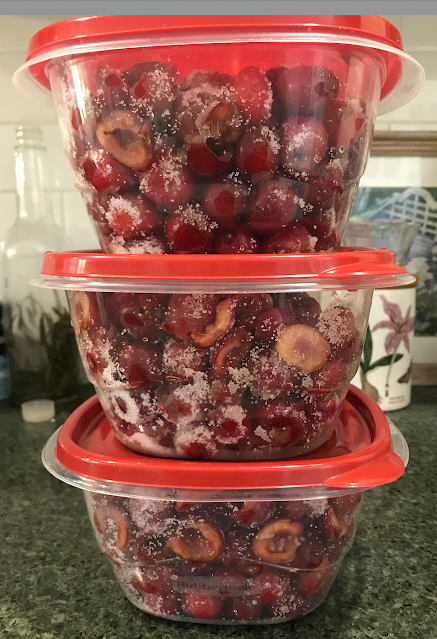June 8 Walmart and Grocery Outlet just before our Father's Day celebration, 1 week early. Many items that I bought were for our cook-out dinner.
2 lbs fresh strawberries, 2 lbs frozen broccoli cuts, large bottle ketchup, 5 lbs shredded mozzarella, package turkey snack sticks, canister whipped cream, 3 lbs apples, bagged salad kit, 3 lbs onions, small bag yogurt-covered pretzels, package hot dog buns, 1 bell pepper, bunch bananas, bar unsweetened chocolate, cabbage, 5 dozen eggs, 2 jars salsa, chicken bratwurst, Doritos, regular tortilla chips, andouille sausage, uncured beef hotdogs -- spent $87.56
June 13 WinCo for the last shopping before surgery
multipack string cheese, 1 gallon milk, 2 cartons tofu, 2 lbs butter, 2 lbs frozen broccoli, 2 lbs frozen peas, 5 lbs carrots, 3 lbs apples, cabbage, cucumber, celery, 3 tomatoes, 2 red bell peppers, 2 bunches bananas, bag of dates, almond flour, natural peanut butter, 2 cartons soy milk, 10 lbs bread flour -- spent $69.85
June 18 Daughter went out and bought some raspberry sorbet for me. Spent $5.48
June 23 Husband went to Grocery Outlet and bought 1 bag of frozen chicken breasts. Spent $6.99
June 27 Daughter is doing grocery shopping for this week.
1 green and 1 red pepper, 3 tomatoes, 1 bundle celery, 5 lb bag carrots, 1 bunch bananas, natural peanut butter, 2 lbs butter, pepperoni, 2 lb block sharp cheddar cheese, gallon whole milk, soy milk, unsweetened, 2 cartons, organic unbleached all-purpose flour, 5 lb bag, 1 lb roasted peanuts -- spent $44.84
Total spent in person for the month of June -- $214.72
We also received another delivery of beef, at a cost of $359.00. It was charged in May, but we received it in June. So my grand total for groceries this month is $573.72. Wow, that's a whopper! However, next month our total will be significantly less.
The Father's Day foods consisted of some of my husband's favorite foods for a cook-out, Doritos, regular tortilla chips, salsa, yogurt-covered pretzels, a salad kit, fresh strawberries and whipped cream for strawberry shortcake, andouille sausage, beef and chicken sausages plus potato buns. We otherwise wouldn't have spent quite as much that week. Our budget for our Father's Day cookout was $25. We went over by about $2. Still, not a high spend for a special meal.
I didn't do the grocery shopping for 2 weeks, instead sending out family members twice to get 1 item each time. This turned out to be a good thing with regards to food wastage. When I was finally up and around, one of the first things I did was straighten the fridge shelves. I only had to compost one item due to spoilage. My family did a great job trying to use everything up. What I did find that was still good to eat but in need of consumption soon was a container of cooked macaroni noodles, a container of cooked rice, and a container of pumpkin puree. I turned all of the macaroni and some of the rice into a dish of macaroni and cheese for lunches today. I've been working on the pumpkin puree. I made a snack cake the other day. Today I made pumpkin-chocolate chip cookies. I still have a few tablespoons left of pumpkin. I'll stir that into some applesauce along with some cinnamon to go with tonight's dinner. It's been a drizzly day today. Those are always good cooking and baking days, in my opinion.
I am in stock-up mode again, focusing on bread flour, butter, and cartons of soy milk this month. I'm not buying a lot, instead just buying maybe one or two extras of each item per month to slowly build a surplus. While it may save more money just waiting until these foods go on sale before buying a lot, buying one or two extra of anything not highly perishable each week is an easy and less financially painful way to build a stock pile.
So that's what was in my grocery cart this past month. What's been in yours?
Do you prefer to stock up little by little, even if you don't get the lowest price, or all in one fell swoop when items are on sale?






















